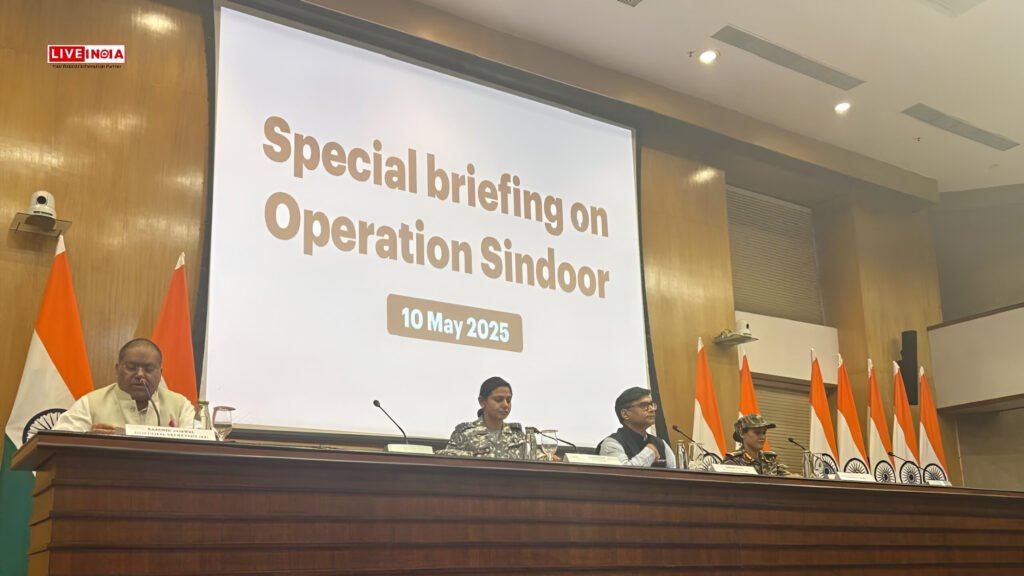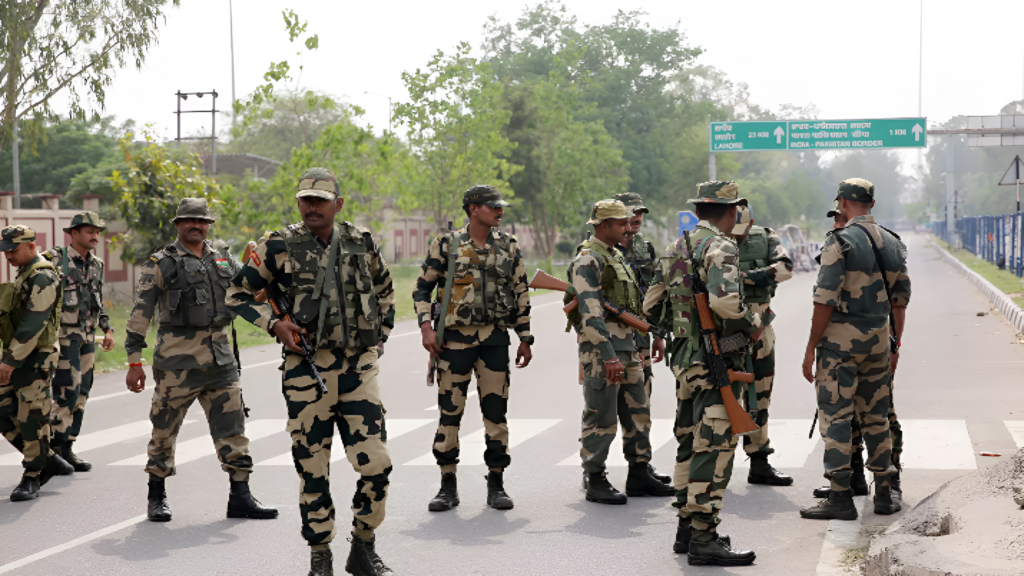
The tenuous peace between India and Pakistan suffered a severe jolt in the early morning of May 10, 2025, when several Indian Air Force bases came under attack. The Indian government confirmed that important airbases at Udhampur (Jammu and Kashmir), Pathankot (Punjab), and Bathinda (Punjab) were struck by Pakistan. This unexpected buildup prompted a national alarm and a sharp diplomatic warning to Pakistan. The crisis has again highlighted the fragile and explosive relationship between the two nuclear-armed neighbors.
What Happened in the Attacks
In official accounts, there were reports of explosions at three big Indian airbases at approximately 2:30 am. The Indian Air Force promptly assured that these were not accidents from inside but outside attacks, i.e., drone and missile attacks made from Pakistan.
- Udhampur Airbase experienced a significant explosion that resulted in a structure within the compound being destroyed.
- Pathankot Airbase, which had been put on red alert ever since the terrorist attack in 2016, had a missile hit at high speed.
- Bathinda Airbase too witnessed drone intrusions which resulted in local damage but not any casualties.
- The three airbases were at once shut for non-essential operations. Fighter jets were scrambled by the Indian Air Force, and the country’s emergency defense systems were brought into operation.
India’s Official Statement
Later in the day, Indian Defence Ministry officials assured that the attacks were “clearly orchestrated” by Pakistan, during a press briefing.
Colonel Sofiya Qureshi, in representation of the country’s armed forces, said:
“We have enough evidence to demonstrate that drones and loitering munitions employed in yesterday’s attack came from across the border. India will retaliate with the strength and dignity our country is known for.”
She also assured that India is not viewing these attacks as isolated events, but as a serious security threat that will be addressed with corresponding diplomatic and strategic measures.
Why These Airbases Were Targeted
These particular airbases are extremely strategic:
- Udhampur lies in proximity of the Line of Control (LoC) and contributes to northward defense.
- Pathankot is vital in relation to the defense of northern airspace and has also been targeted in the past in 2016.
- Bathinda helps aid western frontier defense and constitutes the logistics surveillance hub.
Pakistan by targeting such airbases appears to be in an attempt at striking a military-preparedness-defying tone for India with the added desire of conveying a political message.

India refrained from unleashing an immediate response of military attacks but went into precision air watch and combat preparedness at all its frontiers. Sources indicated that India also switched on its long-range missile defense mechanism and held high-level meetings between its senior most military and intelligence officers.
India further approached allies around the globe such as the United States, France, and the United Nations to draw international attention to Pakistan’s seriousness.
In a special statement, India’s Ministry of External Affairs stated:
“We want peace, but not at the expense of national security. India retains the right to defend itself.”
World Reaction to the Incident
The global community has been in deep concern. The US State Department has called on both countries to exercise restraint. Saudi Arabia and the UAE have also volunteered to facilitate peace negotiations. The United Nations Secretary-General made a statement calling for restraint from both sides.
In the meantime, Pakistan denied participation in the attacks and blamed India for orchestrating the event in order to provide a pretext for future aggression. Indian intelligence reports, however, assert that the attacks were carried out from Pakistani military bases close to the border.
Civilian Fear and Security Measures
The strikes have instilled fear among the civilians residing near the affected areas. Schools in Udhampur, Pathankot, and Bathinda have been shut down until further notice. Hospitals have been directed to stay on high alert. Civilians have been requested to inform the authorities about any unusual flying objects or drones in their area.
Railway stations, airports, and government offices in north India have beefed up security. Flying drones near sensitive locations has been strictly banned.
What’s Next?
Though India has not initiated a counter-attack, there is an assessment that a strategic counter-move is being contemplated. This may involve:
- Retaliation in the cyber domain against Pakistani military infrastructure
- Diplomatic isolation of Pakistan internationally
- Increased security at the border
- Air cover over northern and western borders
- The tension continues, and India has made it clear that further provocation will not be left unpunished.
Conclusion
The airstrikes on Udhampur, Pathankot, and Bathinda airbases have again indicated how rapidly India-Pakistan tensions can spiral. India has, indeed, displayed restraint but equally made it explicit that its restraint must not be confused with its weakness. The next few days will be key to seeing if the two nations head towards a dialogue or additional conflict.
As human beings, our desire is that peace triumphs, and innocent lives on both sides of the border are safe. The world waits with bated breath for India to make its next move.









